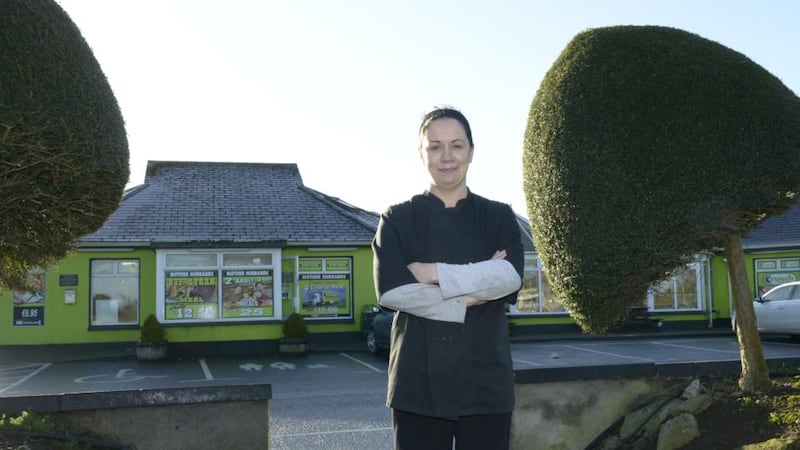What did the Celtic Tiger ever do for us? Well, the roads, for one thing. The years from 2003 to 2010 saw the Irish motorway network expand from a length of 176km to one of 918km in a programme aimed at overhauling the country’s creaking road infrastructure.
The scheme connected regional cities with the capital, creating a radial system of high-quality dual carriageways. In a sense, all roads lead to Dublin: anyone living north of a line from Galway to Navan, where little or no construction took place, might have reason to feel aggrieved, but for those living in Cork, Galway, Limerick and Waterford the system brought substantially shorter journey times and safer roads.
But what of the old routes and the bypassed towns left behind? It’s three years since the completion of the M6 motorway, which, with the M4, provides Ireland’s main east-west route. One way to gauge the effect of the new roads on their surroundings is to travel to Dublin along the old N6, now the humble R446.

Driving east from Galway to Dublin, the first sizeable towns you reach are Loughrea and Ballinasloe. Passing trade has always been vital in Ballinasloe, and local businesses were initially concerned about the motorway, fearing it would starve them of their customers.
As in the smaller town of Loughrea, the streets of Ballinasloe are bustling on a weekday morning. “There appeared to be less business when the motorway opened first,” says Chris Daly, speaking from behind the counter of his shoe shop, on Dunlo Street. “But as time has gone on it seems to have changed back a little bit. We don’t notice it now as much as we did at the start.”
Where the pubs worried about drink-driving crackdowns and the smoking ban, “the shops were worried about the motorway – of course they were”, says Daly. But much of that concern now strikes him as having been unfounded. In some ways he sees the new road as a benefit for the town, freeing it of heavy trucks and other unwanted traffic, so creating a nicer spot for those who do stop. “We seem to be getting more passing trade now,” he says, noting that Ballinasloe “is the last town before they get to Galway”.
Need for better roads
Although other European countries began building large-scale motorways in the 1920s, Ireland didn't really get started until the 1970s and 1980s, when burgeoning industrialisation and the fall-off in rail freight underlined the need for better roads. But even then it wasn't until the early years of this millennium that serious work got under way.
If the infrastructure that was to come hasn't overly troubled businesses in Ballinasloe, the locals farther east in Moate, Co Westmeath, are less upbeat. The owner of a gift shop in the town says it's difficult to gauge whether the economic downturn or the bypass has had the greatest impact, but "we'd miss the Dublin-to-Galway people". The newsagents and grocers do okay from local customers, but food and hospitality have been hit, he says.
Sean Kelly, drinking a pint in the Elbow bar, out of the squally rain, is more forthright. “I moved from Galway to here, and eight years ago the town boomed,” he says. “In the past two years you could see the trade has dropped out of this town. The bypass created an awful lot of problems.”
Kelly, who works in sales and so spends a lot of time in his car, says smaller villages along the route have been hit harder. “It’s killed all the other towns up along,” he says. “Tyrrellspass now, really there’s nothing; Rochfort Bridge, up along that side, it’s really really quiet . . . There’s nothing until you hit Lucan. It’s just dead.”
Residents of those villages don’t necessarily agree. “It used to be like a car park out there,” says a shopkeeper in Tyrrellspass, pointing to the road. “It was only passing-through traffic. It wasn’t anything to us.”
But there are different business models in any town along a national route. Some shops continue to manage nicely with locals coming in to buy groceries; others relied on passing trade. The boarded-up filling stations and closed-down hostelries along the R446 speak of that.
For some businesses, though, the motorway has been a boon. Coach operators, for example, have done well, finding themselves able all of a sudden to carry passengers to the capital in the same time as railways could, but considerably more cheaply. Where the Galway-to-Dublin bus once crawled across the country, it now reaches the capital in two and a half hours.
“You’ve shorter journey times and increased comfort,” says David Conway of Citylink. “With the introduction of the motorways we’ve more direct services than ever before.” He adds that the company has doubled the number of journeys on its main route between Galway and Dublin while maintaining a service on the old road. “More people are travelling as a result [of the motorways] because it’s now much easier to get between Galway and Cork or to get between Galway and Dublin or Galway and Dublin Airport.”
Mother Hubbard
s
In Moyvalley, Co Kildare, Mother Hubbard
s restaurant has fed hungry truck drivers for decades. Its manager, Paula Hickey, recalls starting out there, 21 years ago. At that time the restaurant was one of the only stops along the route where people could get something to eat, and business was brisk.
Since the new roads came in, she says, she has noticed surrounding towns getting quieter, especially Kinnegad.
“That’s gotten to be a right ghost town since the bypass,” she says. “I remember I worked in Kinnegad for years, and the queue of traffic, it would be from Clonard of a Friday evening right into Kinnegad, and it would be just bedlam, especially for matches. That’s all gone.”
But more recently Hickey has seen the old road getting busier, which she suspects might have something to do with the tolls. “You know yourself, if you were travelling to Dublin every day and paying the toll twice a day it all adds up.”
It does. At €2.90 a go, a motorist commuting to Dublin via the M4 can expect to spend €5.80 a day, or almost €30 a week, on tolls. It’s something that hauliers, who pay a higher toll, are keenly aware of.
The motorway network “is a brilliant piece of infrastructure”, says Eoin Gavin of the Irish Road Haulage Association, but “there’s a problem with the tolling and the cost of it”. Depending on the road, heavy goods vehicles can pay up to €7 a toll. David Conway, of Citylink, says the bus company spends about €90,000 a years on tolls.
The charges to trucks “are not sustainable”, Gavin argues; as a result, he says, substantial numbers of drivers use back roads to avoid the toll points. “For example, on the Limerick port tunnel only 30 per cent of trucks are using it, and the rest of the motorways on our network are still being underutilised by 30 or 40 per cent.”
Prof Rob Kitchin, of the National Institute for Regional and Spatial Analysis, at NUI Maynooth, says the motorways have enabled workers to commute long distances but have come with associated costs for families. On top of tolls, there's the rising price of petrol (which recently cost between €1.50 and €1.55 a litre along the old road). "People now are spending a significant proportion of their income on petrol," says Kitchin. "That would be impacting on people's lives."
Another area of concern for some is crime, with regular reports of rural burglaries carried out by urban gangs using the motorways to make a speedy escape. “The motorways reduce travelling times for all road users, and as criminals use the roads, it’s correct to say it reduces their travel time as well,” says Garda inspector John Ferris.
“Crime does evolve,” he adds. There are “significant benefits” from the new road network, but “one of the obvious downsides of it is that if you’re a criminal in Dublin, and you decide to travel to Galway, you can do so in a very short time”.
But it’s about perception as well. According to Ferris, older people are less likely than other people to be burgled, “but the perception of and the fear of crime and burglaries is a different issue”. To that end the Garda works with organisations such as Macra na Feirme to reassure rural communities.
On a wider scale, though, the new motorways are perceived positively. Some, like Sean Kelly in Moate, prefer to use the old roads when they can, because “there’s always something to see”, but few contend that the new system wasn’t a move in the right direction.
“It was very easy to argue that we needed all those roads regardless of how you looked at it,” says Jonathan Dowling, creator of irishmotorwayinfo.com. “Personally, I think one of the very few things Fianna Fáil did really well was the roads.”









